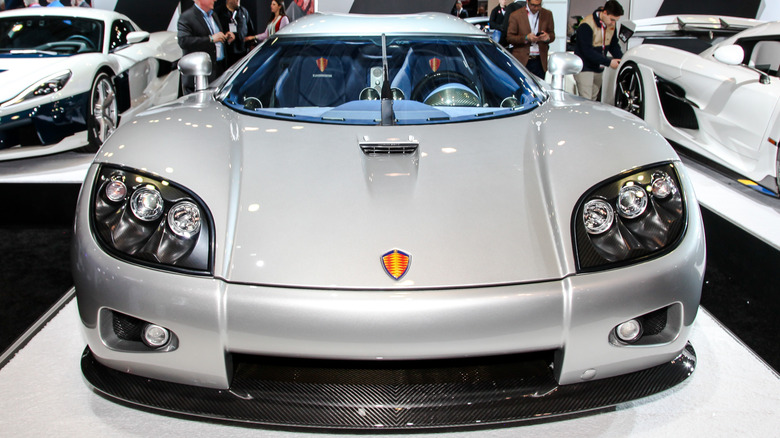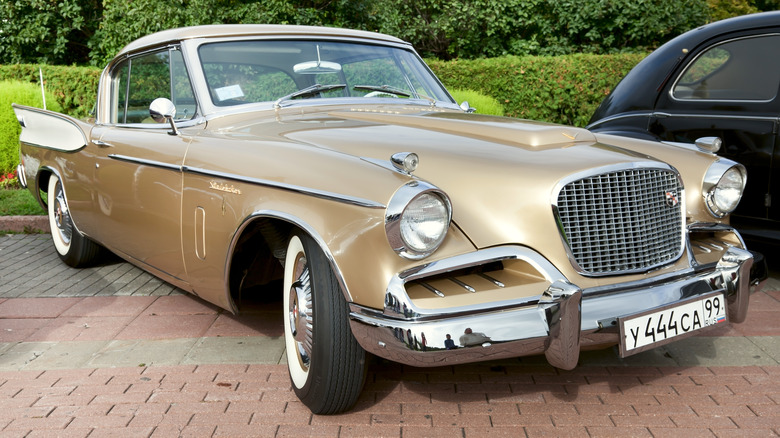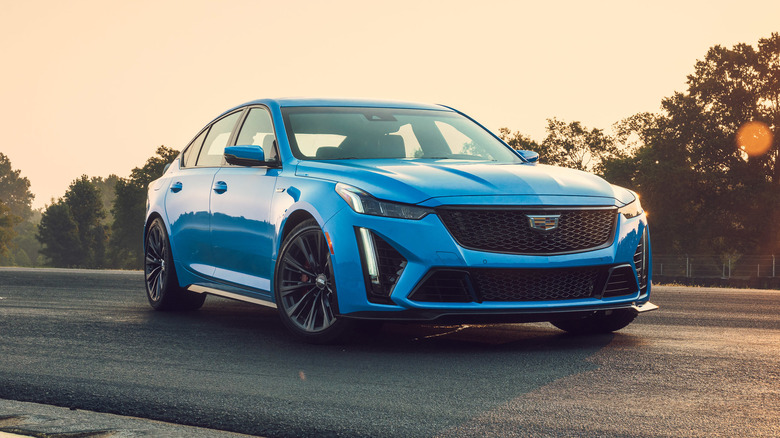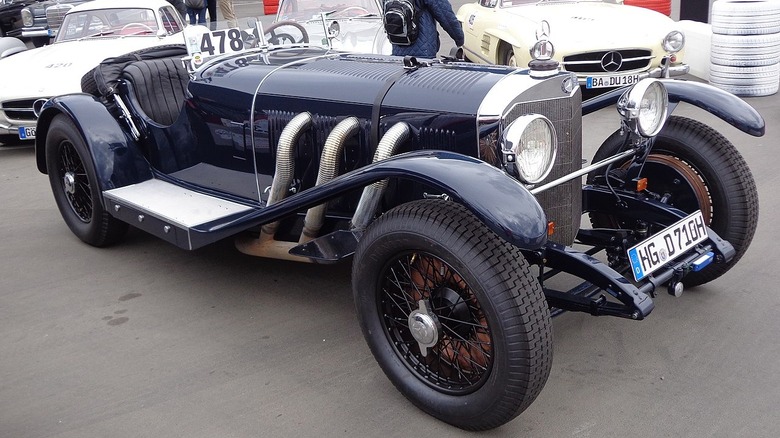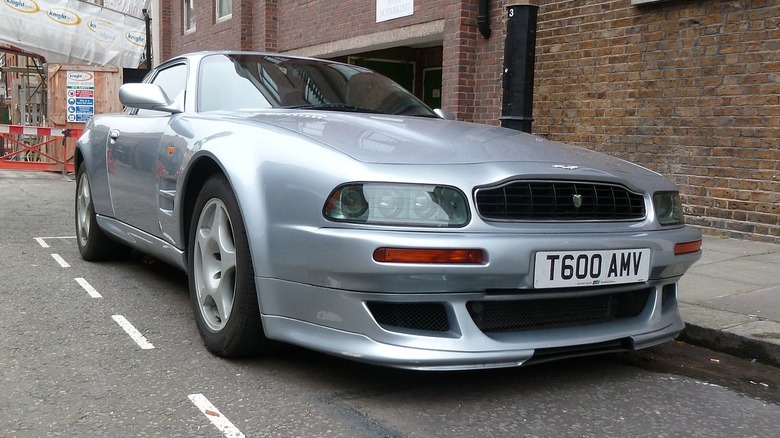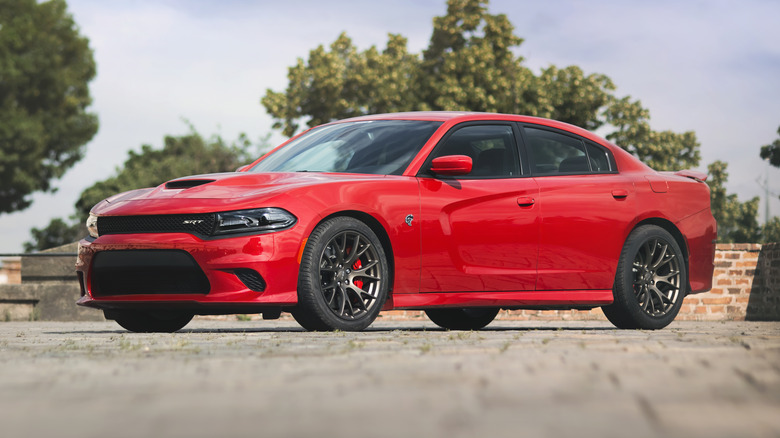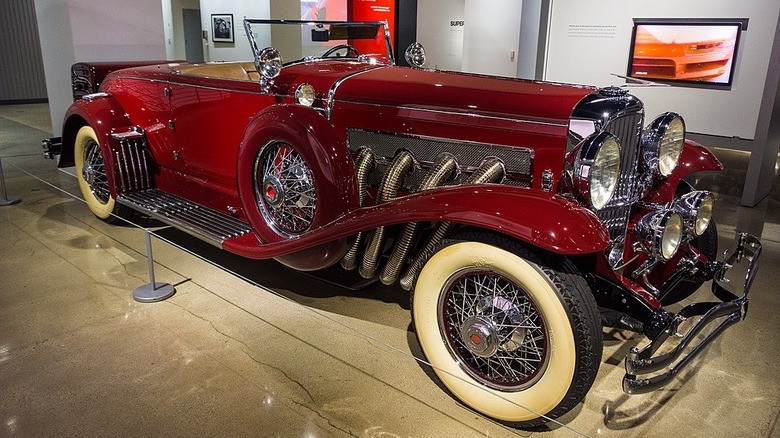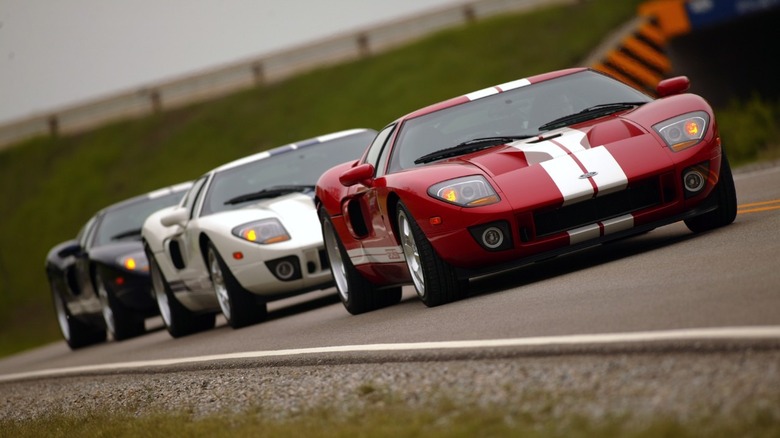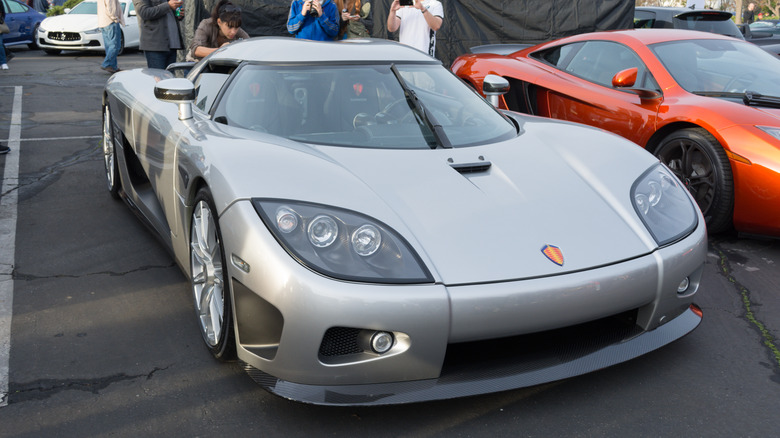The 8 Best Supercharged Cars Ever Made, Ranked
Superchargers are fascinating devices that use power directly from the engine to force more air into the cylinders to create more power at the crank. They have been used since the early days of auto manufacturing. For many years, the preferred way to achieve more power was to add displacement and make larger engines. American muscle cars are the epitome of this concept. Sometimes a larger engine is not possible or practical.
Superchargers come in a few basic configurations, notes Auto Trends. A Roots-type uses two long rotors that mesh to force air through the housing. This increases airflow more than it compresses it. A twin-screw supercharger is similar to the Roots type, but the screws have increased surface area and it also compresses the air as flow increases. Centrifugal superchargers use an impeller similar to those found on turbochargers to boost pressure in the intake manifold. Centrifugal superchargers are generally mounted as an accessory whereas the others are usually installed directly on the intake manifold. Despite the varied mechanics of these devices, they all increase power by providing more oxygen to burn in the combustion chamber.
Some of the fastest cars are equipped with superchargers. We have compiled a list of some of the best based on not just total power output, but also their significance to the history of automaking as well as the styling of the car. So, starting from the bottom of the list up to the best, here are the eight best supercharged cars.
Studebaker Golden Hawk
A somewhat unsung hero of the postwar period, the Studebaker Golden Hawk is a luxury coupe with stunning good looks, a big V8 engine, and an optional supercharger. While the Corvette and Thunderbird of the day are often heralded as the pinnacle of '50s styling, the Golden Hawk is underappreciated. Built to be a luxury performance car, it features striking styling with a large mesh grille up front and medium-sized tailfins out back. The sloping back section and the curved front and rear glass all come together to make a single attractive car.
The Golden Hawk shows that the idea of sticking a large V8 into a smaller car was nothing new when the muscle car era was in full swing. Studebaker did it a decade before. According to Hemmings, the early Hawk models received a Packard 352-cubic-inch V8 that was unavailable for 1957. Studebaker then employed its 289-cubic-inch V8, using a centrifugal supercharger to make up the difference and match the 275 horsepower of the larger mill. While that performance number today's rather pedestrian, for 1957 it was impressive. Studebaker creating a beautiful coupe with big power while teetering on the edge of bankruptcy is an accomplishment that deserves recognition. The company would cease to exist just a few years later.
Cadillac CT5-V Blackwing
Long known for making cars that catered to retirees, the 700 horsepower Blackwing V8 proves Cadillac can compete with the Germans — and do it with style. For many years Cadillac made huge engines that only made big power when intrepid racers breathed on them and stuffed them into race cars. The giant 500-cubic-inch V8 from Cadillac never did much more than get the land barges it was making up to highway speed in adequate time. But, with tough competition coming from European luxury carmakers, Cadillac finally got itself into the game of making a performance car that could keep up — and the CT-5 Blackwing is a fantastic machine.
The CT-5V Blackwing may be one of the last gasoline-powered Cadillacs and it is definitely a high note to go out on. With a GM LT4 V8 engine cranking out 668 horsepower, thanks, in part, to its supercharger, the Blackwing is a true barn burner. Specs include 0-60 mph in 3.4 seconds, 1/4 mile run of 11:30 at 129 mph, and a top speed of 200 mph. The engine is a hand-built 6.2-liter that is supercharged and placed in front of a 6-speed transmission or an amazingly fast-shifting 10-speed automatic. And, for the near $100,000 price tag, an elegant and aggressively styled luxury car comes with it. As a last hurrah for performance gas engines, this supercharged Cadillac sits very nicely.
Mercedes-Benz SSK
The '20s were a fascinating time of innovation in automotive engineering, with engineers on both sides of the Atlantic finding new ways to squeeze more power out of their cars. Mercedes-Benz was one of the companies with many successes in engineering engines and one such powerplant resided in the incredible SSK from the late '20s.
The SSK is an open-top car styled very much like its contemporaries, however, it rides low to the ground and features an enormous 7.0-liter 6-cylinder engine. By 1928, Mercedes-Benz had already been a company in some form for almost fifty years, with its founder, Carl Benz, being the inventor of the car itself. Therefore, Mercedes was already a leader in the industry, and its cars were known for being technologically advanced, well-built, and winners on the race track. Models prepared for racing used the same six-cylinder engine equipped with a Roots-type blower for an output of 300 horsepower, according to Rev Institute. The manufacturer posted the rating for the road-going version at 200 horsepower.
Whether it has 200 or 300 horsepower, the SSK is a magnificent example of early 20th-century engineering and design. The car is a beautiful example of Mercedes at the top of its game in the interwar period. With only 31 models made, auctions do not happen often. Bonham's most recent sale in 2004 resulted in a winning bid of nearly $5 million.
[Featured image by Chattus via Wikimedia Commons | Cropped and scaled | CC BY-SA 4.0]
Aston Martin V8 Vantage V600
Aston Martin has a long history of making fine English motorcars that are both fast and luxurious. The Vantage V8 model debuted in 1973 and has been boosted in popularity in several James Bond Movies, along with the legendary Goldfinger DB5. In the '90s, Aston wanted to squeeze a bit more power from its V8 engine and opted for a supercharger to get the job done. And, the obvious solution to not having enough power with one supercharger is to bolt on a second one.
While twin-charged cars with turbo and superchargers are not rare, the V8 Vantage V600 is among the very few production cars with dual superchargers. Top Gear reports that the engineering budget at the company was rather small at the time, so they had to make do with what they had and find affordable alternatives to get more power. The V600 benefits from a pair of Eaton superchargers to boost output up to a healthy 550 horsepower and a top speed of 200 mph. For the time, that was supercar territory. Inside the car is traditional English luxury with fine leather trim and well-appointed interiors. The biggest drawback to this car is the luxury-tuned suspension that can be a bit soft in the corners. Regardless of how it makes it around a track, the Vantage V8 V600 ranks high just for being so bonkers.
[Featured image by Ben via Wikimedia Commons | Cropped and scaled | CC BY 2.0]
Dodge Charger SRT Hellcat
Chrysler has been making cars go fast with ridiculous engines for decades. Its Hemi FirePower engines ruled the tracks beginning in the '50s, and the '60s saw the dominance of the Chrysler 440 V8. Like its competitors, Chrysler lost the huge horsepower in the '70s and '80s due to EPA regulations but has since brought big power back in spades. Its most recent pavement pounder is the Charger SRT Hellcat with a supercharged 6.2-liter V8 good for 797 horsepower.
The chassis of the most recent Charger dates back to 2006, but it has plenty of current tech sitting beneath the hood. The 2021 model has what is likely the longest name in Chrysler history, Dodge Charger SRT Hellcat Redeye Widebody. It is a beast on the street and the track and boasts a few clever features. Chief among them is its SRT Power Chiller, which uses the air conditioner to aid in cooling the massive amount of compressed air flowing through the intercooler from the supercharger, a novel way of tackling the problem of heat that derives from compressing air. The rest of the car is mostly standard Chrysler, which is to say some of it feels cheap and maybe a bit dated. But this car is about brute force and it serves that up with plenty to spare.
Duesenberg SJ
When speaking of opulence, luxury, and power in an American automobile, one needs to look no further than Duesenberg. Built during the Great Depression, Duesenberg automobiles display a stark juxtaposition against the suffering going on during that period. Duesenbergs signified wealth and power to the extreme. But they were also well-made cars built by brilliant engineers and skilled coach builders. Each car was unique as they were built to order for wealthy clientele such as barons of industry, Hollywood actors, and royalty.
The Model J was first introduced in 1928, suffering from the worst timing ever for a luxury car as the Depression began the next year. But it was a grand vehicle with beautiful coach-built styling and lots of shiny nickel and chrome plating. Silodrome notes that attention to detail was key in creating cars at this level — even the engine bays are beautiful. The Model J came with an inline 8-cylinder engine that produced 265 horsepower at a time when the Ford V8 only produced 65 horsepower. Duesenberg engineered the engines and Lycoming built them. The Model SJ used the same engine with a supercharger to make 320 horsepower, making it the most powerful car in America. This engine also featured twin camshafts and four valves per cylinder and a Model SJ could get to 60 mph in eight seconds despite weighing in at 5,570 lbs., according to Supercars.net.
[Featured image by Robert Rouse via Wikimedia Commons | Cropped and scaled | CC BY 2.0]
Ford GT
For years, American gearheads longed for a domestic company to deliver a supercar that could rival the machines coming from Italy. A couple of boutique automakers came up with some interesting models, such as the Vector, but never anything that could be produced in volume. But those gearheads' wishes ended up being granted not by another tiny boutique carmaker, but by Ford. 2005 saw the debut of Ford's GT, the first (production-ready) American supercar. It took inspiration from the Ford GT40 race car of the '60s and combined classic styling with modern engineering to create a car that would go very fast, look good, and be capable of taking you to dinner and a movie.
The Ford GT came equipped with a version of Ford's modular 5.4-liter V8 with a supercharger nestled between the cylinder banks. It punched out 550 horsepower and 550 lb-ft of torque, which gave the lightweight 3,500 lb. car lightning-fast acceleration. It sits low to the ground and is designed to hug the ground and all of these things combine to make a car capable of 205 mph. It is a fitting continuation and tribute to the original GT40 with its unique roof cutout doors and styling cues. The car was well received by the automotive press and is today one of the most collectible Fords ever made. It was good to see an American company compete in the world of supercars and the GT did it so well, Ford made another one.
Koenigsegg CCX
Christian von Koenigsegg is a brilliant engineer, designer, and businessman whose automotive creations are the pinnacle of supercar production. Koenigsegg is not just successful, it is rewriting all the books on what a supercar can be. The Swedish company is now responsible for some of the greatest engineering achievements happening in automotive technology, including a camshaft-free engine design and a car with no transmission. The latest projects include advancements in hybrid and EV technology that, hopefully, will trickle down into the market for ordinary cars.
While the current stock of Koenigsegg cars is highly impressive, the first production car, the CCX, is no less intriguing. The 2004 CCR model was powered by a Ford 4.6-liter V8 that was extensively tuned and modified and equipped with two centrifugal superchargers. If that isn't impressive enough, that car evolved into the CCX, which is powered by a twin-supercharged 4.7-liter V8 of an original Koenigsegg design pushing 655 horsepower. There are many reasons the CCX is the best supercharged car made to date, but it would take an entire article to cover the synchro-helix doors, carbon fiber everything, lightning-fast transmission, and amazingly low drag coefficient (via Car and Driver). The Koenigsegg CCX is among the top three or four fastest cars in the world and its looks are remarkable. And as long as Koenigsegg keeps blowing us away with these amazing cars, a Koenigsegg will likely always be the best.
